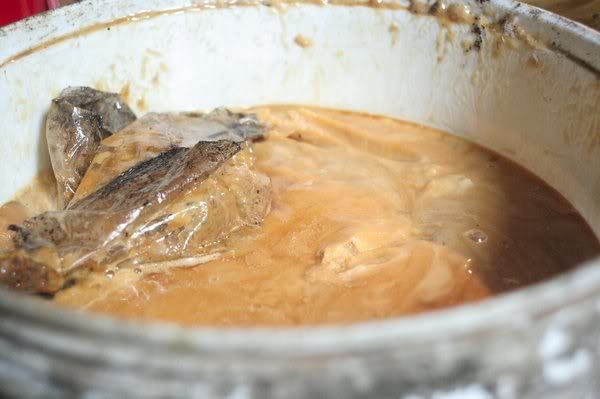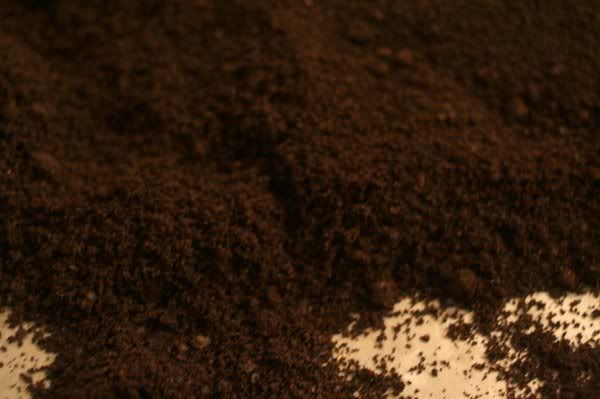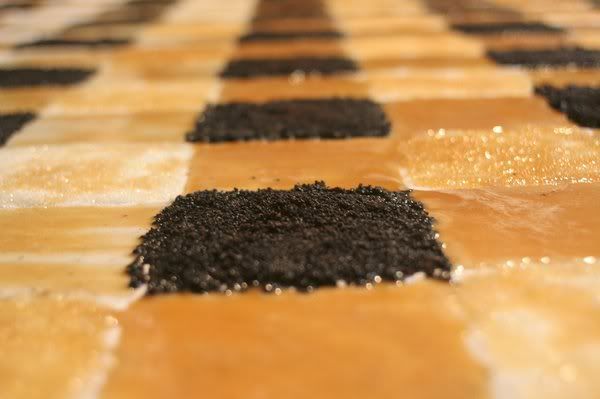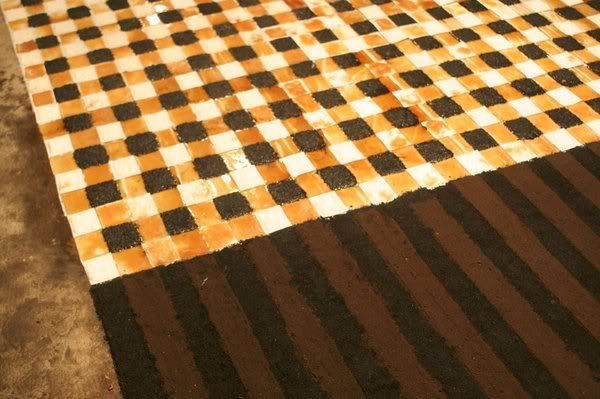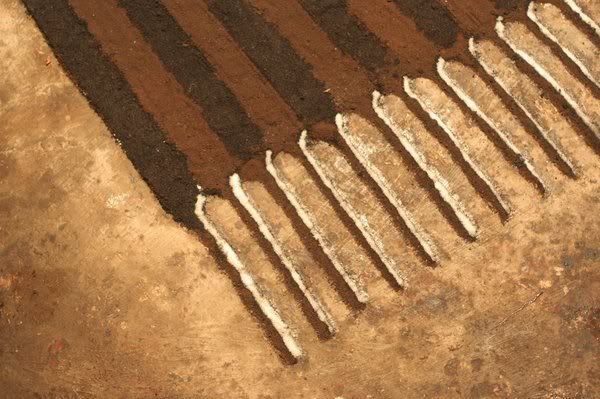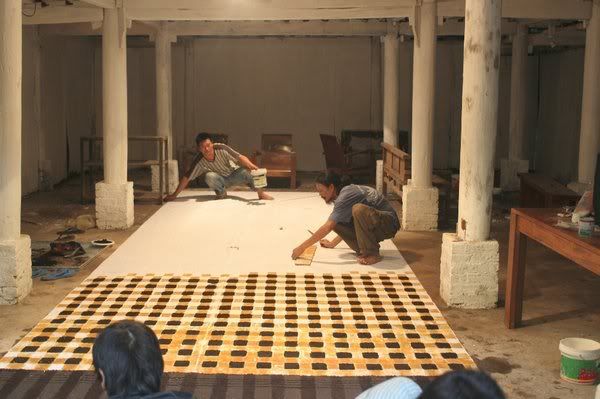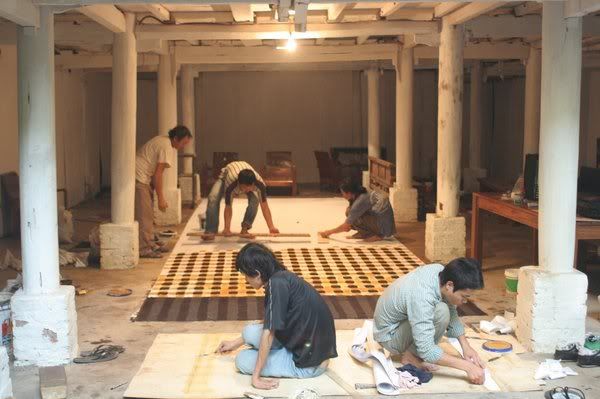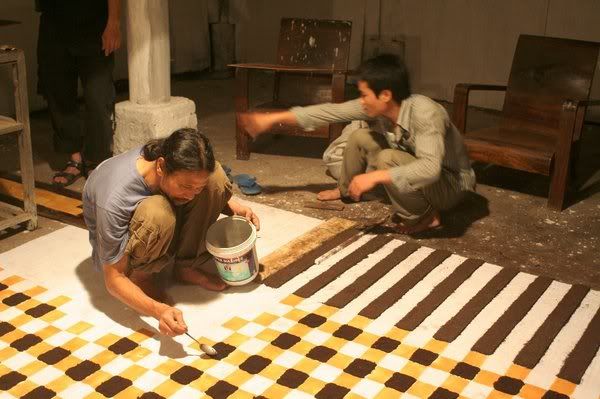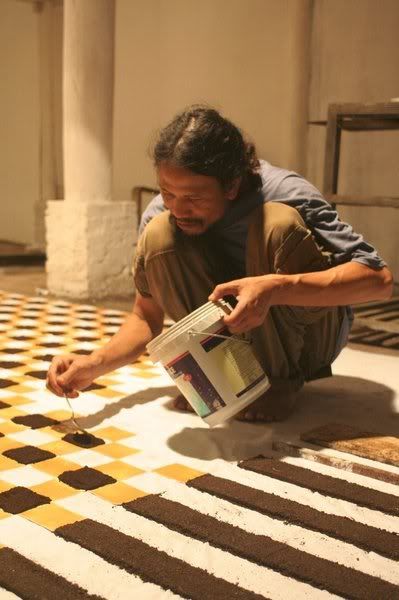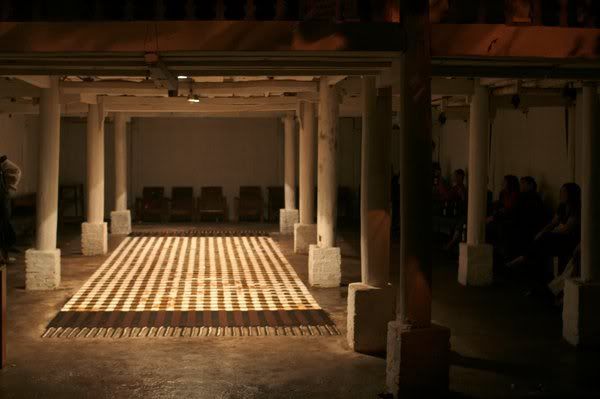Bố tôi, một người Campuchia, tập kết ra Hà Nội là một bác sĩ quân đội từng công tác tại viện 103 Hà Đông trước năm 1970. Sau này ông bị giết chết bởi nạn diệt chủng cuả Polpot nhằm bài trừ tận gốc những thành phần thân với người Việt.
Mẹ tôi, một phụ nữ Việt Nam, là cô giáo từng dạy học tại trường con em những người miền nam tập kết ra bắc trong chiến tranh.
Tôi mang trong mình hai dòng máu và một kỷ niệm không êm đềm về cuộc chiến tranh, cùng với những góc khuất nguy hiểm bởi chính trị và chính hoàn cảnh xuất thân cuả mình. Trước khi đến với nghệ thuật tôi cũng đã từng là người lính chiến đấu tại chiến trường Campuchia ,nên cũng hiểu được phần nào về nó.
Tác phẩm "KHĂN" cũng chính là tâm sự một phần nào về chính thân phận cuả bản thân tôi. Đó chính là một sự pha trộn trong tâm hồn cũng như sự chung chiêng trong cuộc sống đời thường.
Tác phẩm được dùng chất liệu bã cafe tôi xin ở một quán cạnh nhà, biểu thị cho góc khuất cuả chiến tranh và chính trị đè lên thân phận cuả tôi.
Phần đường thốt nốt được chuyển từ campuchia cùng đường trắng cuả Việt Nam là những chất liệu thường dùng hàng ngày trong đời thường cuả hai đất nước được biểu thị cho văn hoá cuả hai dân tộc vẫn ngọt ngào chảy trong tôi.
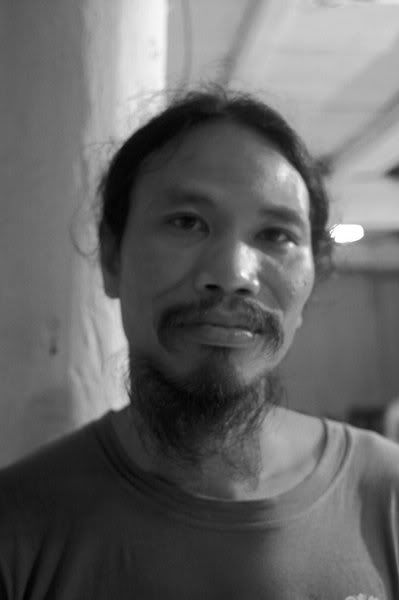
Everything was born having its own originality and reason. And only that creature can understand itself the most. To talk about oneself is a very natural act for the need of sharing of human beings.
My father, a Cambodian, who assembled in Hanoi was a military doctor working at 103 hospital Ha Dong before 1970. Later he was killed by the Pol Pot to exterminate Cambodians who was close with Vietnamese.
My mother, a Vietnamese woman, was a teacher at the school for children from Southern families assembled in the North of Vietnam during the war.
I’ve carried with me two different blood and an unpleasant memory about the war with the dangerous hidden angle of politics and my background. Before engaging in art, I was a soldier fighting at Cambodia battlefield so I understand part of its story.
The piece “ SCARF” is a part of my story and my own life being told. It’s the mixture within the soul and the unstability of everyday life.
The piece made of coffee residue I got in a shop near my place which stands for the hidden angle of war and politics pressed on me.
The jaggery part brought from Cambodia together with the white sugar of Vietnam were the two everyday materials of the two countries stands for different cultures of two nations still running sweetly inside me.
